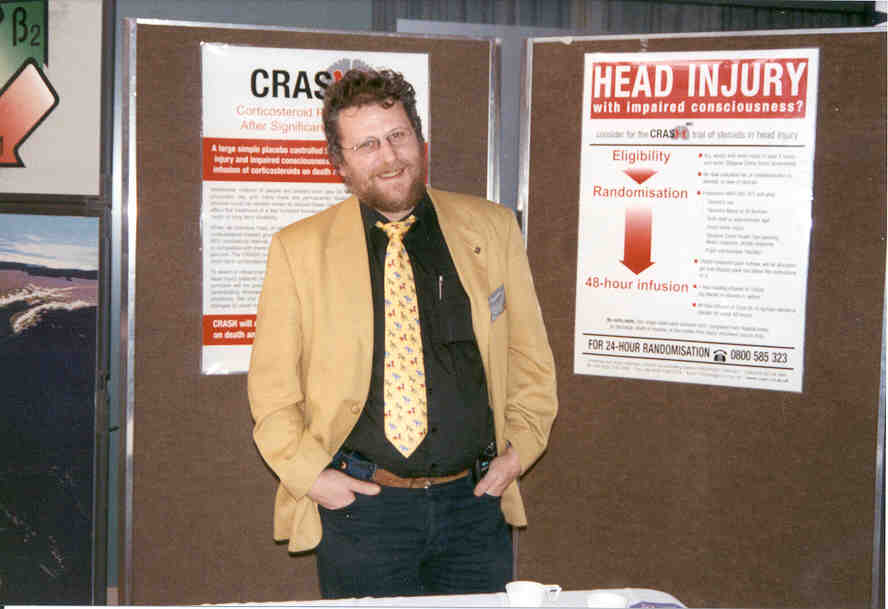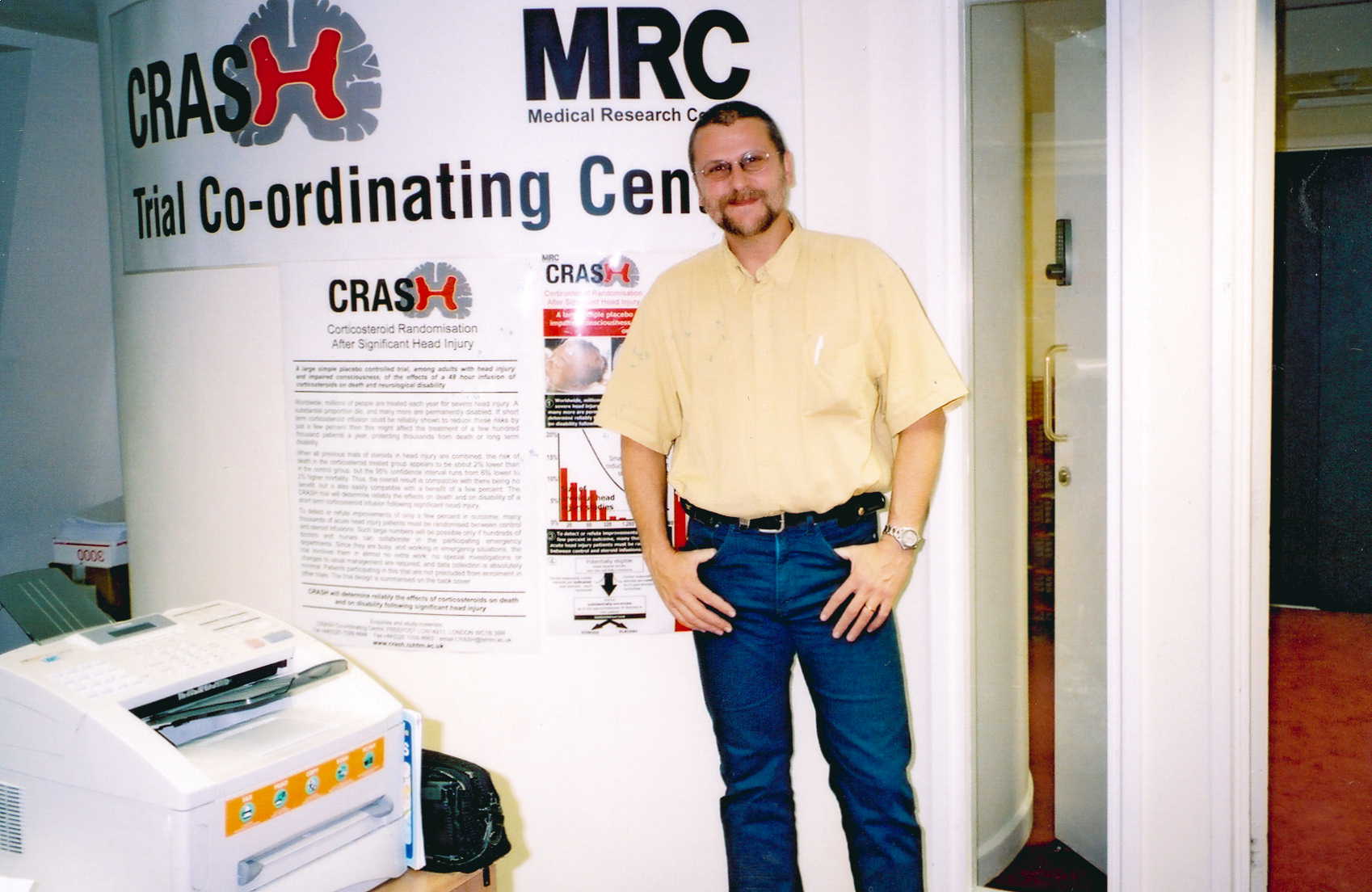 |
| CRASH
-So what’s it all about?
In the year 2002, about 10,000,000 people around the world sustained a brain injury. About a million of these people will have died but many millions will experience long term, and often permanent disability. Next year the numbers will probably be a bit higher because of increasing global motor-vehicle use. Most of the patients will be from resource poor countries. At the moment there are no effective pharmacological treatments for brain injury. This is not particularly surprising because injury is the poor relation in medical research. A report from the World Health Organization compared funding for research and development with the ‘disease burden’ for a range of global health threats measured in disability adjusted life years (DALY). Per unit of disease burden, the best funded areas were HIV and Asthma and the worst was Road Traffic Injury. More recently, a report in the BMJ looked at the number of randomised patients in clinical trials per 1000 DALYS. Clinical trials are essential if we are going to find better treatments and the numbers of patients in clinical trials is a good measure of research activity. There were 16 randomised patients per DALY for cancer and 0.05 randomised patients for injury! This is why the CRASH trial is such an important opportunity and why it has to be a success. But what do we mean by success? Whatever the results of the CRASH trial - if we can randomize and follow up 20,000 patients, ensuring throughout that the data are accurate and taking all the appropriate steps to protect patient safety, we will have succeeded. If we find that corticosteroid treatment improves recovery after brain injury this will be a major medical advance. If we find that corticosteroid treatment is useless, we will have answered a question that has been around for close to sixty years. But the process of the trial is just as important as the result. We will have shown that large scale multi-centre trials are possible in head injury and that this does not have to be the poor relation of medical research. We will have paved the way for future large scale trials and the evidence base for the management of patients with head injury will gradually be built. The very good news is that we are right on target! We have well over 4,000 patients randomised and the rate of recruitment is rising steadily. Because the average severity of patients included in the trial is higher than we anticipated, the outcome event rates are higher, and so we have even more power than expected. Early outcome form completion is in the high nineties and we have excellent rates of follow up at six months. We have just over two more years of recruitment ahead of us. We cannot afford to take it easy. We need hundreds of new hospitals, and we must do everything we can to ensure high recruitment in the hospitals that are already enrolling. Thanks to your hard work we have come a long way. We have a long way to go. Strength
to you all! |
| CRASH
Presentation on CD A CD-presentation showing the aims and methods of the MRC CRASH TRIAL is now available. It includes short video clips demonstrating how to identify and enrol eligible patients, as well as how to administer the trial treatment. We hope this will be used by CRASH Trial Collaborators when teaching new staff about the trial and for giving presentations about the CRASH Trial generally. If you haven't received a copy yet and would like one, please email CRASH@Lshtm.ac.uk. |
CRASH
Trial three years involvement - Effect on Body Weight?
 |
Guy
Mazairac, |
 |
|
CRASH
Co-ordinating Centre, LSHTM,
49-51 Bedford Square, LONDON WC1B 3DP |
